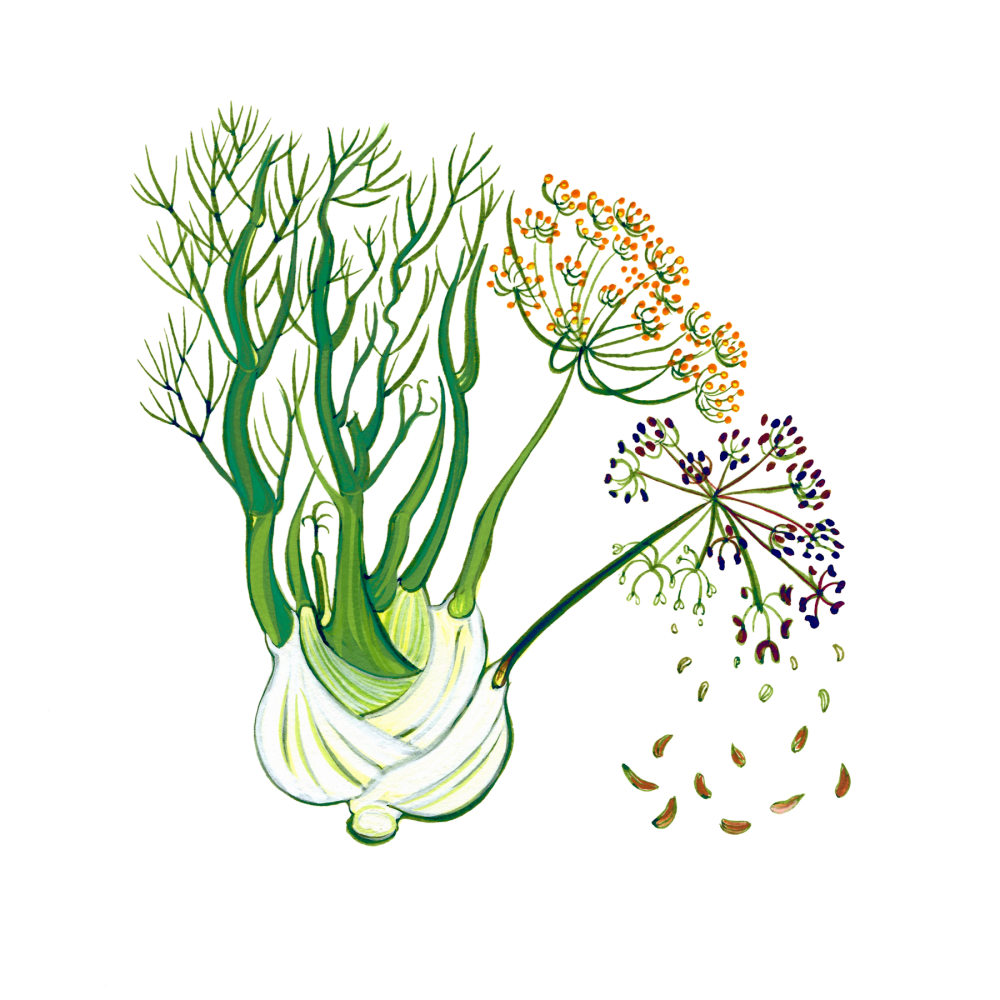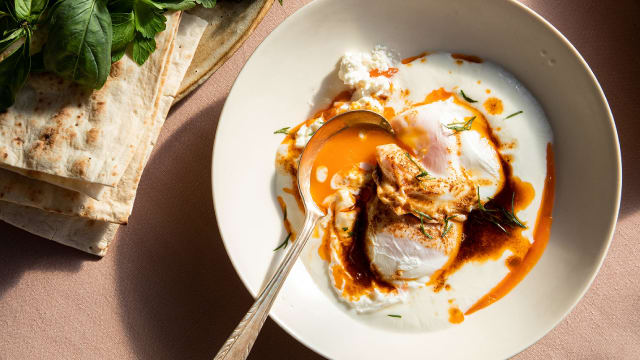Fennel

Latin name: Foeniculum vulgare
Other names: Finocchio (Italian, for the domestic bulb)
Uses: vegetable, spice, herb, tea
What is fennel?
Fennel is a perennial herb in the carrot family that’s used as a vegetable (bulb and stalk), an herb (leaves and flowers), and a spice (seeds). In addition to its many culinary uses, fennel often serves as a flavoring in toothpaste, liqueur (like Pernod), and alcohol (like absinthe and sambuca).
Why is fennel healthy?
Fennel contains a number of vitamins (several Bs and C) and minerals (calcium, iron, manganese, and magnesium). High in flavonoids and phenolic compounds, fennel is renowned for its many health benefits: antioxidant, anti-inflammatory, antibacterial, and even anti-cancer. In various cultures it is used as a traditional remedy for arthritis, gastritis, insomnia, gingivitis, and flatulence.
What does fennel taste like?
The bulb and hollow stalks are crunchy, juicy, and aromatic, with a bright anise flavor that plays exceptionally well with many other ingredients. Fennel contains anethole, the compound that gives star anise its characteristic licorice flavor, though it’s much less intense in fennel. Fenchone, another major part of fennel’s aroma and taste, is found in basil, eucalyptus, lavender, and rosemary.
How do I use fennel?
Bulb and stalk
Fennel is equally tasty raw and cooked. If you want to eat it raw, try shaving it thin, crosswise to the grain, because big pieces can be fibrous. If you prefer to cook it, you can use just about any technique, from braising to grilling. It has a natural affinity for Mediterranean and Asian cuisines, and it makes an excellent addition to mirepoix as a base for stocks, soups, stews, and bean dishes.
Leaf
Fennel’s pinnate leaves look a lot like dill, a close relative. Containing the same flavor as the rest of the plant, the leaves can be used as a fresh herb or garnish, and can be simmered in stock or steeped to make tea, which is used to relieve cramps, nausea, and constipation.
Seed
Many cultures use whole or ground fennel seed to flavor dishes, often in combination with other spices — you see this In Europe, North Africa, the Middle East, and South and Southeast Asia. Fennel seed is a classic flavor in Italian sausage and biscotti. It’s also an essential component of many spice blends, including herbes de Provence, ras el hanout, garam masala, and Chinese five spice. It often appears in mukhwas, the South Asian after-meal mix of seeds and spices that is meant to freshen breath and help with digestion.
What does fennel pair well with?
Fennel pairs particularly well with citrus (especially orange), apples, olives, parsley, mint, seafood, and blue cheeses.
Where does fennel grow?
Fennel originated in the southern Mediterranean and over millennia people have spread it throughout Europe, North America, and Asia. It has two major types: the domesticated variety that forms a bulb at its base, and the wild variety which does not. Both types have tall stalks, delicate feathery leaves, yellow flowers, and strongly flavored seeds. All parts of the plant are edible.
How to buy fennel:
Look for firm, unblemished bulbs and bright green fronds (if they’re still attached).
Fun fennel fact:
In Greek mythology, Prometheus used a fennel stalk to bring fire down to Earth from Mount Olympus. The Greek word for fennel is marathos, so the town of Marathon — famous for the battle in 490 BCE and the foot race that resulted from it — means “place of fennel.” There’s a good chance that Marathon was the best-smelling battle in history.



